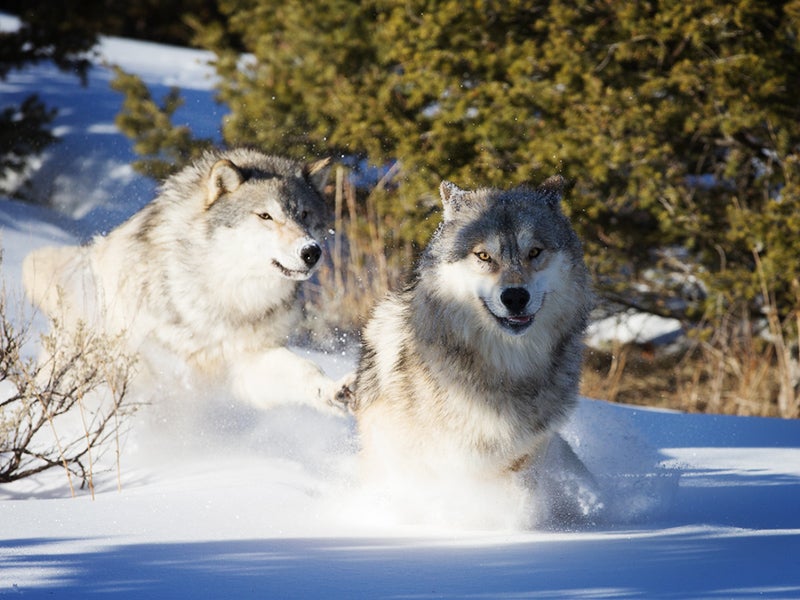Incidents of Poaching Rise When Government Legally Culls Wolves
A new study shows that intolerance for the species rises when the government is seen killing wolves.

This page was published 9 years ago. Find the latest on Earthjustice’s work.
For years, officials in charge of wildlife management have operated under the belief that policy that allows for government-sponsored culling of predators reduces the incidence of poaching. The idea behind this theory is that eliminating “problem” animals, such as wolves with a history of attacking livestock, will make local people more tolerant of the species as a whole. But a new study conducted by researchers in Wisconsin and Sweden found just the opposite is true.
According to the study which focused specifically on wolves, published in the Proceedings of the Royal Society B, government culling may actually instill more intolerance of the species in people living in areas with wolf populations, and higher rates of poaching than when the species is fully protected. The most likely explanation is that when the government is seen killing wolves, it sends an unintentional signal to the public that it’s okay for others to shoot and kill, too.
The researchers, Guillaume Chapron of the Swedish University of Agricultural Sciences and Adrian Treves of the University of Wisconsin-Madison, looked at changes in wolf protection laws in Wisconsin and Michigan between 1995 and 2012, and measured shifts in the wolf population during this timeframe.
Over the 18 years observed, there were six periods when wolves were completely protected by the law, and six periods in which the government could legally cull them. While the wolf population continued to grow throughout the study, the researchers found that population growth slowed by one third during legal culling periods. The slow-down was not solely due to the culling, because the researchers included the number of wolves legally killed and other factors like wolves leaving the area in their calculations. Considering all factors, poaching remained as the only explanation for the reduction in growth.
This study holds important implications for wolf management in Wisconsin, which has one of the highest populations of wolves in the U.S. It may also apply to other carnivores and challenge wildlife management practices beyond.
The study comes during a time that courts are starting to crack down on the federal government for making wildlife management decisions–including conducting massive wildlife culls–that appear to be politically motivated rather than being grounded in science. For example, a federal judge earlier this month rejected a 2014 decision by the U.S. Fish and Wildlife Service to deny Endangered Species Act protection to the wolverine, lambasting the service for bowing to political pressure and ignoring climate science, calling its decision not to protect the wolverine “border[ing] on the absurd.”
The study also comes at an important time for wolf conservation and wildlife management as Congress unleashes more and more attacks on the Endangered Species Act, the bedrock conservation law that for imperiled plants and animals serves as their last line of defense. Proposals to delist or block the listings of individual species, like the wolf, are often stealthy, tucked away in unrelated, must-pass bills like the federal defense budget. These attacks are often backed by the biddings of polluting industries and developers, hoping to dismantle any environmental roadblock that challenges economic interests.
Earthjustice is fighting to protect wolves and other endangered species in court and on the Hill. Learn more at Earthjustice.org/howl.